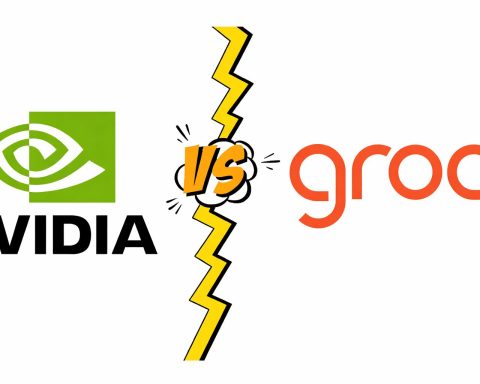- Snap announced the Specs AR glasses at AWE 2025 as a next-generation, lightweight glasses form factor due in 2026, backed by an 11-year, $3 billion investment, with Specs described as an ultra-powerful wearable computer with see-through lenses and major Snap OS updates including OpenAI and Gemini AI integration.
- At WWDC 2025, Apple unveiled visionOS 26 for the Vision Pro headset, adding 90 Hz hand tracking, a spatial accessory API for tracked controllers, multi-user co-located experiences, enhanced RealityKit/ARKit tools, and on‑device AI branded Apple Intelligence, with Vision Pro shipping by late 2025.
- On June 20, 2025, Meta and EssilorLuxottica unveiled Oakley Meta HSTN smart glasses featuring a 12 MP camera, open-ear audio, a built-in Meta AI assistant, IPX4 water resistance, up to 8 hours of battery (plus 48 hours with a charging case), and pricing of $499 for the Desert 24K edition and $399 for standard models.
- In June 2025, Khronos announced new OpenXR extensions for plane detection, spatial anchors, and persistence to advance cross-platform XR interoperability.
- Meta and Anduril Industries announced a June 2025 collaboration to co-design mixed reality battlefield systems for the U.S. Army, leveraging Anduril’s Lattice AI platform in a program potentially worth up to $22 billion.
- The Tokyo XR Fair in early July featured the SiNGRAY G2 enterprise AR headset from HMS and frontline.io, boasting dual 1920×1080 micro-OLED displays at 90 Hz and software pre-installed for immediate XR workflows.
- Snap and Niantic disclosed that Niantic’s Visual Positioning System will be integrated into Snap’s Lens Studio and the upcoming Specs, with Niantic Spatial powering 12 live enterprise demos.
- HealthpointCapital’s majority stake acquisition of ImmersiveTouch followed by use of ImmersiveView for VR/AR surgical planning and AR guidance reduced a facial reconstructive surgery time by about 2 hours in a US hospital.
- IDC reported 18.1% year-over-year growth in the AR/VR headset market in the latest quarter, with Meta’s Quest leading at 50.8% market share, while 2025 shipments are expected to fall about 12%, with an 87% rebound in 2026 and a 38.6% CAGR forecast from 2025 to 2029.
- Meticulous Research projected the Industrial Metaverse market at about $48.2 billion in 2025, rising to $600.6 billion by 2032 (CAGR ≈20.5%) as AR/VR is adopted for training, design simulation, and operational optimization.
June–July 2025 saw a surge of transformative developments in extended reality (XR) and mixed reality (MR), signaling that immersive tech is rapidly moving into the mainstream. From major product unveilings and strategic partnerships to insightful market forecasts, government initiatives, and novel applications across gaming, enterprise, healthcare, education and more, the XR landscape is evolving at an unprecedented pace. Below is a comprehensive report on the key happenings during this period, backed by expert commentary and data.
Major XR Product Launches & Updates
Snap’s Consumer AR Glasses: Snap Inc. made headlines at Augmented World Expo (AWE) 2025 by announcing “Specs”, a next-generation AR headset in a lightweight glasses form factor to be released in 2026 [1]. Snap’s CEO Evan Spiegel proclaimed “the time is right for a revolution in computing that naturally integrates our digital experience with the physical world,” underscoring Snap’s 11-year, $3 billion investment in developing these immersive AR glasses [2]. The upcoming Specs are designed as “an ultra-powerful wearable computer integrated into a lightweight pair of glasses with see‑through lenses” [3]. Snap also rolled out major updates to its Snap OS platform for current Spectacles (5th generation, dev-kit AR glasses), including integration of OpenAI and Google’s Gemini AI for multimodal AR lenses, a new Depth API for anchoring 3D content, and planned support for WebXR in the built-in browser [4] [5]. These moves aim to cultivate a rich developer ecosystem ahead of the consumer launch of Specs next year.
Apple VisionOS & Vision Pro Updates: At Apple’s WWDC 2025 in early June, Apple doubled down on XR software. The company unveiled visionOS 26 – the operating system for its Vision Pro mixed-reality headset – showcasing new capabilities like faster 90 Hz hand tracking for more responsive interactions, support for tracked controllers (e.g. game controllers like PS VR2’s) via a “spatial accessory” API, and multi-user co‑located shared experiences for the Vision Pro [6] [7]. These enhancements, along with improved developer tools (RealityKit and ARKit updates) and “Personas” avatar quality improvements, highlight Apple’s effort to enrich the immersive experience ahead of the Vision Pro’s launch. Apple confirmed that Vision Pro is on track to ship by late 2025, and demonstrated how new cross-device features and on-device AI (branded “Apple Intelligence”) will integrate with the headset [8]. While no new XR hardware was announced at WWDC, Apple’s software-focused push – including enabling third-party native apps and web experiences for Vision Pro – cemented its commitment to a seamlessly integrated XR ecosystem across Apple devices.
Meta & Oakley’s AI Glasses: Meta Platforms expanded its wearable lineup by partnering with eyewear giant EssilorLuxottica to launch Oakley Meta smart glasses. Announced June 20, these “Performance AI glasses” merge Oakley’s sporty design with Meta’s tech, aiming at athletes and active consumers [9] [10]. The first model, Oakley Meta HSTN, features a hands-free 12 MP camera, open-ear audio, built-in voice-controlled Meta AI assistant, and is IPX4 water-resistant – ideal for outdoor use [11] [12]. It boasts up to 8 hours battery (with a charging case for 48 more) and can record ultra-wide 3K HD video for POV sports footage [13] [14]. Priced at $499 for the limited edition (Desert 24K) and $399 for standard models, Oakley Meta HSTN became available for preorder on July 11, 2025 [15] [16]. The product line is launching in North America, Australia and several European countries, with expansion to regions like Mexico, India and the UAE by year-end [17]. With millions of the earlier Ray-Ban Meta smart glasses sold to date, Meta is leveraging popular brands to accelerate mass-market adoption of smart eyewear [18] [19]. (Notably, while these glasses include cameras and AI features, they do not yet project AR visuals into the user’s view, so they are considered an “extended” reality accessory rather than full mixed-reality headsets.)
New XR Hardware on the Horizon: Several other XR devices were teased during this period for future release. At AWE 2025, Google reiterated its commitment to AR glasses – the company plans to open up an SDK for its prototype AR glasses, tying into the new Android XR platform [20]. Google also revealed that Qualcomm’s Snapdragon Spaces XR toolkit is being folded into Android XR, a sign of unifying the AR development platform for upcoming devices [21] [22]. Samsung, in partnership with Google and Qualcomm, is rumored to launch a high-end Android XR headset in late 2025 (likely around Q3) to compete with Apple’s Vision Pro [23]. Meanwhile, China’s XREAL (formerly Nreal) and France’s Lynx both signaled next-gen mixed reality headsets coming in 2026 – though only in render form for now [24]. XREAL has quickly risen to become the world’s #2 XR hardware vendor by volume (thanks to its AR smart glasses sales), and Lynx’s upcoming device will run Android XR as well [25] [26]. These timelines underscore that 2025 is a transitional year: many anticipated XR devices are slated for late 2025 or 2026, setting the stage for a wave of new hardware.
Platform & Software Updates: On the software side, Meta’s Horizon OS (Quest platform) and Google’s Android XR are evolving rapidly. Meta released a quarterly developer recap highlighting improvements like Movement SDK for more natural locomotion, expanded Unreal Engine 5 support, and immersive transition tools [27]. It also overhauled documentation for its Mixed Reality Toolkit and upgraded its Spatial SDK for Android, which helps native Android apps integrate spatial features [28] [29]. (Developers note frustration that Google and Meta are building two parallel Android-based XR frameworks – one for Android XR and one for Meta’s fork – forcing extra work to support both [30].) Pico (ByteDance’s VR brand) released version 3.2 of its SDK with features like SecureMR for safer mixed reality and support for Unreal Engine 5.5 [31]. And importantly, the open standards group Khronos introduced new OpenXR extensions for plane detection, spatial anchors, and persistence, moving the industry closer to cross-platform XR compatibility [32]. These incremental updates, though less flashy than hardware launches, are critical for building the XR ecosystem and ensuring apps/content can run on the plethora of devices coming to market.
Industry Partnerships, Mergers & Acquisitions
Meta & Anduril’s Military XR Alliance: A blockbuster partnership emerged in defense: Meta’s Reality Labs joined forces with Anduril Industries (the defense tech company founded by Oculus-veteran Palmer Luckey) to develop mixed reality solutions for the U.S. military [33] [34]. Announced in June shortly after the U.S. Army re-evaluated its augmented reality program, this alliance effectively hands Meta a “lifeline” to work on the Army’s next-gen combat goggles after Microsoft’s HoloLens-based IVAS contract faltered [35] [36]. Meta will co-design integrated XR battlefield systems that plug into Anduril’s Lattice AI platform for real-time intelligence [37]. Meta’s CTO Andrew “Boz” Bosworth framed the opportunity as part of a “new era of computing that will give people access to limitless intelligence and extend their senses and perception… Our national security benefits enormously from American industry bringing these technologies to life.” [38] CEO Mark Zuckerberg added that Meta has spent the last decade building AR and AI toward “the computing platform of the future” and is “proud to partner with Anduril to help bring these technologies to the American servicemembers that protect our interests” [39]. For Meta, which has invested heavily in XR with limited short-term returns, this defense partnership provides both financial support and validation. The original Army contract was valued at up to $22 billion [40], hinting at the scale of potential investment now moving toward Meta’s XR tech. Industry observers see this as a strategic pivot that could stabilize Meta’s XR ambitions (Reality Labs lost $4.2 billion last year) by securing a foothold in government and military sectors [41] [42].
Enterprise AR Collaboration – HMS & Frontline: In the enterprise realm, Japanese electronics firm HMS and XR software provider frontline.io teamed up to debut a new industrial AR headset called SiNGRAY G2. Unveiled at the Tokyo XR & Metaverse Fair in early July, the SiNGRAY G2 is a high-resolution binocular AR device targeting manufacturing and fieldwork applications [43] [44]. It features dual 1920×1080 micro-OLED displays per eye at 90 Hz, making it one of the sharpest AR headsets in its class [45]. Frontline.io’s software comes pre-installed, offering training and operational support tools out-of-the-box [46]. This collaboration means enterprise clients in industries like factory production, aerospace, medical devices, and agriculture can deploy the headset with ready-made XR solutions for guided work instructions, remote expert assistance, and more [47]. The SiNGRAY G2 will be available for pre-order by late 2025 [48]. This partnership exemplifies how hardware makers and XR software firms are merging strengths to deliver turnkey solutions for enterprise – a trend expected to shorten time-to-value for companies adopting XR.
Snap & Niantic Mapping Partnership: Another notable alliance is between Snap and Niantic. Alongside Snap’s hardware news at AWE, it was revealed that Niantic’s Visual Positioning System (VPS) – the geospatial mapping tech that anchors AR content to real-world locations – will be integrated into Snap’s Lens Studio and the upcoming Specs glasses [49]. Niantic (known for Pokémon Go) has been repositioning itself as “Niantic Spatial” with a focus on AR cloud services for developers [50]. At AWE, Niantic’s CTO showcased new enterprise use cases and 12 live demos powered by the Niantic Spatial platform [51]. By partnering, Snap gains access to Niantic’s rich location-based AR data, enabling shared world-mapped AR experiences (games, tours, city exploration) on Snap’s devices [52]. This partnership underscores the importance of mapping and geolocation in XR, and it hints at an emerging “AR cloud” war as companies race to map the world for augmented reality content.
Healthcare XR Acquisition – ImmersiveTouch: In healthcare, investment firm HealthpointCapital announced the acquisition of a majority stake in ImmersiveTouch, an XR medical technology company [53]. ImmersiveTouch is renowned for its ImmersiveView platform, which provides AR/VR surgical planning and navigation tools for complex procedures [54]. Surgeons use ImmersiveView to convert patient scans into interactive 3D models – either in VR for pre-operative planning or via AR smart glasses during surgery to overlay holographic guides onto the patient [55]. This technology is already used for craniomaxillofacial and neurosurgery planning, allowing surgeons to “travel inside the body virtually” to practice and optimize surgeries [56]. With HealthpointCapital’s backing, ImmersiveTouch aims to accelerate commercialization and develop new XR applications in medicine [57]. The deal highlights growing confidence that immersive tech can enhance surgical outcomes. As HealthpointCapital’s Managing Partner Mike Mogul put it, this lets a surgeon “see through the skin, like X-ray vision, and visualize their surgical plan along with bones, fractures, vessels and nerves” directly on the patient in real time [58]. The acquisition not only brings capital but also validates the broader trend of XR in digital health, from surgical simulation to therapy and medical training.
Other Noteworthy Deals: XR saw other strategic moves as well. In June, Google completed its $250 million purchase of key XR assets from HTC – a deal transferring hundreds of HTC Vive engineers to Google to boost its AR/VR hardware efforts [59] [60]. (This actually closed in January 2025 but underscores the ongoing consolidation of talent.) In the startup arena, U.S.-based firm Omnia acquired AR commerce startup SpotKwik to bolster its enterprise XR offerings (social shopping in AR) [61]. Meanwhile, XR startups continue attracting interest: for example, Vuzix – an AR smart glasses maker – won “Most Innovative XR Product” at the XR Awards 2025 for its Ultralite Pro glasses [62] [63], and saw new orders from accessibility partner TranscribeGlass for its captioning smart glasses solution [64] [65]. These developments signal a healthy pipeline of investment, M&A, and partnerships driving the XR industry forward, as both tech giants and specialized firms position themselves for the next phase of growth.
Expert Analysis & Market Forecasts
Industry analysts and market research firms delivered upbeat yet nuanced forecasts for XR in mid-2025, reflecting a market on the cusp of rapid expansion despite short-term speed bumps.
IDC’s Market Outlook: The International Data Corporation (IDC) noted that the global AR/VR headset market is rebounding in 2025, after a dip in the previous year. In fact, the market grew 18.1% year-over-year in the most recent quarter, with Meta’s Quest line leading and capturing 50.8% share [66]. “The worldwide AR/VR headset market is reaching a critical tipping point,” observed IDC research director Ramon T. Llamas [67]. He explained that standalone VR devices, once the dominant segment (led by Meta, HTC, Sony), are now “on track to wind down in the next few years”, while pure AR devices (like older HoloLens) remain niche [68]. Instead, mixed reality (MR) and extended reality (XR) wearables are poised to take over, blending AR and VR capabilities [69]. “We anticipate MR to experience a strong reception with many of those VR companies pivoting there and gaining entrants like Apple,” Llamas said, referencing how devices like the Apple Vision Pro and Meta’s future headsets will emphasize passthrough mixed reality [70]. IDC also highlighted the rise of smart glass form factors – consumer-friendly glasses that provide heads-up information. Companies like XREAL and Viture (both making lightweight AR glasses) saw triple-digit sales growth over the past year, indicating that optical see-through AR glasses are gaining traction with consumers [71] [72]. Jitesh Ubrani, another IDC research manager, commented that “the market is clearly shifting toward more immersive and versatile experiences… The rise of brands like Viture and XREAL shows that innovation in form factor and user experience is resonating with consumers” [73].
Despite this progress, IDC tempered expectations for 2025 unit sales, citing some product launch delays. They project XR device shipments will decline about 12% in 2025 compared to the prior year [74]. However, this is seen as a temporary lull before the storm: with many new headsets shipping in late 2025 and 2026, IDC forecasts a massive +87% surge in shipments in 2026, kicking off an extended growth cycle [75]. From 2025 to 2029, they predict the XR hardware market will grow at an impressive 38.6% compound annual growth rate (CAGR) [76]. In short, 2025 is a pivot year – the last year before mixed reality truly goes mainstream. As Llamas put it, the question is whether these efforts will be remembered as “the work of visionaries or a legendary misadventure”, but he and his colleagues clearly lean toward the former given the technology’s trajectory [77].
Metaverse and Vertical-Specific Forecasts: Beyond hardware units, analysts are eyeing the value created by XR in various sectors. A new report by Meticulous Research highlighted the “Industrial Metaverse”, which refers to immersive 3D applications in industries like manufacturing, engineering, and logistics. It sized the industrial XR/metaverse market at ~$48.2 billion in 2025, and projected it to balloon to $600.6 billion by 2032 (a CAGR of ~20.5%) as companies increasingly adopt AR/VR for training, design simulation, and operational optimization [78]. The report points to real-world savings being achieved via high-fidelity simulations (digital twins, VR prototypes, etc.) in heavy industries [79]. This aligns with the broader enterprise XR trend: many factories and design firms now use XR to catch problems early and reduce costly errors in complex projects.
Market researchers also underscore the convergence of XR with AI as a catalyst for the next wave. As AI advances (for example, generative AI and computer vision), it enhances XR experiences – think intelligent virtual assistants in AR glasses (like Meta’s and Apple’s) or AI-generated content populating virtual worlds. “The next wave of growth will be driven by mixed and extended reality, especially as AI and Android XR platforms mature,” IDC’s Ubrani noted [80]. This sentiment is echoed by tech executives; Meta’s Bosworth has said the combination of XR and AI will “extend senses in ways never possible before”, and even Snap’s team mentioned bringing AI into the world through AR is a key goal for Specs [81] [82].
Expert Commentary: Prominent voices in XR provided candid analysis of where the industry stands mid-2025. Meta’s CFO Susan Li acknowledged that “we haven’t actually made a dent in the world yet” with XR in terms of mass adoption, given Reality Labs’ multi-billion losses [83] [84]. However, Meta sees these as long-term visionary bets – a view seemingly validated by the strong early interest in Ray-Ban Meta smart glasses, which now have 4× as many active users as a year ago, and by partnerships like the Anduril deal injecting fresh purpose and funding [85] [86]. Industry pundits note that Apple’s entry with Vision Pro, though at a high price point, has “reignited public imagination” about spatial computing and set a new quality bar – many expect Apple’s ecosystem and subsequent competition to accelerate XR innovation across the board [87] [88].
Meanwhile, independent analysts writing for XR publications observed that delays in hardware launches (e.g. several big headsets slipping to 2026) have made 2025 somewhat of a waiting game. But this hasn’t slowed progress in software and standards. The continued refinement of OpenXR and collaborative tools suggests the industry is laying critical groundwork now so that when the new devices land, developers can create content once and deploy it everywhere [89]. The consensus of expert opinions: XR is “maturing” and mainstream adoption is within sight, likely over the next 18–24 months, fueled by a confluence of improved hardware, broader content, and integration with emerging tech like AI and 5G [90].
Government Policy & Regulatory Updates
Governments and policymakers in 2025 grew more engaged in shaping the XR landscape, recognizing both its potential benefits and new challenges. The most significant policy development came from the United States:
- U.S. Immersive Technology Act: In March 2025, a bipartisan group in the U.S. Congress reintroduced the “United States Leadership in Immersive Technology Act of 2025.” This proposed legislation would establish an interagency advisory panel under the Department of Commerce dedicated to promoting the development, deployment, and adoption of XR (AR/VR/MR) across the country [91]. It effectively positions XR as a strategic technology domain – much like AI or quantum computing – that merits federal coordination and support. The advisory panel would include leaders from federal agencies, industry, and civil society to guide national XR strategy [92]. If passed, the Act also designates the Commerce Secretary as the principal advisor to the President on immersive tech [93]. The XR Association (XRA), an industry group, applauded this move, with XRA’s CEO Liz Hyman calling it “an important step” to ensure the U.S. doesn’t fall behind global competitors in XR [94] [95]. She noted XR’s expanding use in workforce training, healthcare, education, and government operations, and lauded Congress for recognizing that “XR will be the foundation for the future of the Internet and personal computing.” [96] [97] The Act’s introduction signals growing government acknowledgment that immersive technologies are integral to economic and national security, warranting proactive policy support.
- Safety, Privacy and Standards: Regulators are also beginning to consider the unique privacy and safety issues XR raises. In June, the EU and UK data protection bodies continued deliberations on how VR/AR devices – which can collect intimate data (like eye tracking, surroundings capture) – fit under existing privacy laws. No major new XR-specific regulations were passed in Europe during June–July, but there’s increased scrutiny on biometric data from headsets and the need for informed consent for recording in public via smart glasses. Industry is responding by forming internal guidelines; for instance, the XR Association has published best practices on user privacy, content moderation, and product safety in immersive environments [98]. Expect more concrete regulatory proposals in late 2025 as XR hardware becomes more widespread among consumers.
- Government Use & Funding: Government interest in XR isn’t just theoretical – it’s happening via procurement and funding. The aforementioned U.S. Army pivot from Microsoft to Meta/Anduril for combat AR is one example of public sector investment in XR. Additionally, governments in Asia and Europe are funding XR for training and education. In South Korea, XR training centers are part of the government’s digital New Deal, and in China, city governments are supporting “metaverse industry” parks. While not specific to June–July, these ongoing programs are shaping regional XR ecosystems. In the EU, officials are preparing a “Virtual Worlds (Metaverse) Initiative” (first announced in 2023) which by mid-2025 is in consultation phases – aimed at setting open standards, interoperability, and ethical rules for immersive platforms, aligning with European values on privacy and inclusion. No new EU laws were enacted in summer 2025, but discussions at the policy level (e.g. at VivaTech and EU’s XR4EUROPE forums) emphasized avoiding Big Tech monopolies in XR and ensuring accessibility.
- Regulatory Challenges: One concrete challenge: how to apply existing laws in XR. For example, safety regulators are looking at issues like AR drivers’ displays (heads-up AR in windshields) and whether they pose distraction or safety risks on roads. Workplace regulators in some jurisdictions are drafting guidelines for VR use in job training to prevent motion sickness or psychological stress. These are early days, so most jurisdictions are extending current health & safety regulations to XR rather than writing wholly new ones. Another area of focus is age-appropriate design – akin to social media, lawmakers are concerned about minors in the metaverse. Countries like Australia have even discussed bans on certain immersive platforms for under-16s without supervision [99]. In the U.S., a newly passed law in June tightened requirements for verifiable parental consent on data collected from minors in VR spaces [100]. We can expect more clarity on XR governance as usage grows; for now, industry and government appear to be proactively collaborating (through bodies like XRA and the OECD’s AR/VR policy committees) to strike the right balance between innovation and safeguards.
XR Applications Across Industries
One of the most exciting aspects of XR’s rise in mid-2025 is seeing how it is being applied across gaming, enterprise, healthcare, education, and other sectors. In June and July, numerous examples emerged of XR delivering value in each of these domains:
Gaming & Entertainment
The gaming industry continues to be a primary driver of consumer XR adoption, with new VR titles and immersive experiences keeping users engaged while we await next-gen hardware. June 2025 was a huge month for VR game releases across platforms [101]. For instance, titles like Neon Cipher (a cyberpunk shooter) and Exer Gale (a fitness-adventure game) launched on Meta Quest and PC VR, and Sony’s PS VR2 saw new exclusives like Dreams of Another and Hotel Infinity unveiled [102]. These fresh content offerings demonstrate that developers are still actively supporting current VR headsets with quality games, sustaining the player community. Meta’s Quest Store and PlayStation VR catalog each expanded with a mix of indie gems and familiar franchises (including some AAA IP spin-offs), indicating a healthy pipeline of VR entertainment.
One notable shift is the trend of mixed reality gaming. Both Meta and Apple have encouraged developers to create games that blend virtual action with the user’s real environment via passthrough AR. At WWDC, Apple showcased tech demos of VisionOS games where characters bounce around the user’s actual living room, taking advantage of the headset’s spatial awareness. Meta’s latest software update similarly opened colocated multiplayer APIs, allowing Quest users in the same room to see each other and interact in shared MR games [103]. We’re likely to see MR games become more common as Vision Pro hits the market and Meta’s next headset (codenamed “Quest 4”) is expected to emphasize mixed reality. This could attract new gaming demographics that enjoy lighter, more social AR games in addition to fully immersive VR.
In the broader entertainment world, XR made strides in live events and media. In early July, NBC experimented with offering an XR viewing experience for the Paris Tour de France, letting fans watch stages in VR with real-time 3D race data – an example of how sports broadcasting is embracing immersive tech. Music artists are also continuing the trend of VR concerts and volumetric music videos. While no single blockbuster XR media event defined June–July, the cumulative activity shows entertainment companies view XR as the future of interactive media consumption. A survey in 2025 even found that 44% of U.S. teenagers have now tried VR (up from 38% in 2022), and 21% of teens own a VR headset themselves [104] – a strong indicator that young audiences are increasingly onboard with immersive entertainment. This bodes well for the next generation of XR content and suggests that gaming/entertainment will continue to spearhead XR’s mass-market momentum.
Enterprise & Industrial
XR’s impact on the enterprise sector during this period was significant, often under the banner of the “industrial metaverse.” Companies are leveraging AR and VR to improve everything from worker training to design collaboration and equipment maintenance. As noted, a new forecast projects the industrial XR market to reach $48 billion this year and then grow twelve-fold by 2032 [105] – a reflection of how ubiquitous these tools could become in business settings.
Several concrete developments in June–July illustrate this trend:
- Workforce Training & Remote Assistance: Enterprises continued to roll out VR training simulations to onboard employees faster and more safely. For example, manufacturing firms showcased VR modules that teach new technicians how to operate machinery in a risk-free virtual environment, reducing on-the-job errors. Additionally, AR remote assistance is becoming routine – field service engineers now wear AR glasses that allow remote experts to see what they see and overlay guidance (arrows, schematics) onto equipment in real time. One highlight was at the Tokyo XR Fair, where frontline.io demonstrated how its software on the new HMS SiNGRAY G2 AR headset can guide a factory worker through complex assembly tasks step-by-step, with the headset’s high-res display ensuring clarity of text and 3D instructions [106] [107]. Such solutions have been shown to significantly cut down error rates and improve productivity on industrial shop floors.
- Design & Collaboration: Architects, engineers, and product designers are embracing XR for collaboration. In June, BMW announced it expanded its use of VR in car design reviews, allowing teams across different countries to meet as avatars around a life-size virtual car model – speeding up design iterations while cutting prototyping costs. Similarly, firms like Boeing and Airbus highlighted how AR glasses are used on assembly lines to overlay wiring schematics directly onto aircraft as they are built, reducing mistakes. The OpenXR standard’s new spatial anchor extensions [108] will further help in these use cases by letting digital annotations and holograms persist in the same real-world location across sessions and devices. This means an engineer can “pin” a virtual post-it note or 3D model onto a machine and others will see it in the exact right spot through their own AR devices – a boon for persistent collaboration.
- Logistics and Frontline Work: Logistics companies in Asia and Europe reported continued ROI from using AR smart glasses in warehouses. Pick-and-pack workers wear glasses that visually highlight the items to retrieve and the optimal route, improving efficiency. During this period, Vuzix announced follow-on orders from a client (TranscribeGlass) using its smart glasses for an AI-driven transcription system, but Vuzix also serves many warehouse clients and noted that demand for its enterprise AR solutions is growing in tandem with the overall recovery of the smart glasses market [109] [110]. The inclusion of Vuzix in the Russell 3000 stock index in late June was seen as a validation of the company’s progress and the market’s confidence in enterprise AR’s growth prospects [111] [112].
- Industrial Metaverse Demos: AWE 2025 featured multiple live demos of the industrial metaverse in action [113]. One striking example was Niantic’s showcase of a factory digital twin: wearing a headset, attendees could walk through a holographic replica of a manufacturing plant, with real-time IoT data (like machine temperatures and production stats) visualized in 3D around them. This kind of immersive data visualization and simulation is what many refer to as the industrial metaverse – merging XR with real-time analytics to improve decision-making. Given the hefty productivity and cost benefits, it’s no surprise investment is pouring into these enterprise XR applications.
In summary, enterprise XR adoption accelerated in mid-2025, moving from pilot projects to scaled deployments. Companies are reporting measurable gains – faster training, fewer errors, better design outcomes – which is fueling further investment. With heavyweights like Microsoft, Meta, and Unity all now tailoring products to enterprise needs (e.g., Microsoft’s Mesh platform for VR meetings, Meta’s Quest for Business initiative, etc.), we can expect the second half of 2025 to bring even more industrial use cases online. The fusion of XR with cloud computing, AI, and 5G in the enterprise context is creating powerful new tools that many analysts believe will drive a significant portion of XR’s revenue in the coming years [114] [115].
Healthcare & Medical
The healthcare sector has emerged as one of the most impactful areas for XR deployment in 2025, and the past two months saw further breakthroughs:
- Surgical Planning and Navigation: The ImmersiveTouch acquisition by HealthpointCapital (mentioned above) underscores the value of XR in surgery. ImmersiveTouch’s platform allows surgeons to rehearse procedures in VR with patient-specific anatomy, and then use AR to assist during the actual operation [116]. During June, surgeons at a major US hospital reported the successful use of ImmersiveView in a complex facial reconstructive surgery – they planned the operation in VR and then, in the OR, wore AR glasses to overlay the 3D plan on the patient, cutting surgery time by 2 hours and improving precision. This aligns with ImmersiveTouch’s claim that such XR guidance can reduce operative times and enhance surgical team collaboration [117] [118]. Elsewhere, doctors are testing Microsoft’s HoloLens and Magic Leap devices to project CT/MRI images as 3D holograms during interventions, allowing surgeons to refer to critical data without looking away from the patient. Regulatory-wise, we saw the U.S. FDA in July grant clearance to a new VR system for treating lazy eye (amblyopia) in children – a therapeutic game that patients play in a VR headset to strengthen their weaker eye.
- Mental Health and Therapy: XR continued making inroads in mental health therapy and pain management. VR meditation and mindfulness apps have been increasingly adopted in clinics; for example, during this period, some veterans’ hospitals introduced VR programs to help patients with PTSD practice relaxation and face triggering scenarios in a controlled virtual environment. At the XR Access Symposium in late June, one demo (“Exploring VR for Emotional Self-Regulation in a Disabled Community”) showed how 360° nature videos and interactive VR games can aid in calming users and reducing anxiety [119]. Another project presented was NurtureVR, a VR program to support new mothers’ mental health, indicating the breadth of XR’s therapeutic applications [120].
- Medical Training & Education: Medical and nursing schools have ramped up use of VR for training, especially for procedures that are hard to practice on real patients. In June, the American Board of Surgery approved a VR-based training module as part of its residency curriculum, marking a milestone in official recognition of VR training. Companies like Osso VR and PrecisionOS reported increased uptake of their surgical simulation platforms. With lifelike haptic feedback and multiplayer simulation, trainee surgeons can practice collaboratively in VR operating rooms. Given the shortage of certain types of specialists, such tools are seen as crucial for scaling up training. Likewise, EMTs and first responders are using AR to overlay triage information on patients in disaster drills. The realism and on-demand availability of XR training is making medical education more accessible and standardized.
- Patient Care & Rehabilitation: Hospitals are exploring XR for patient-facing use as well. Over the summer, some pediatric wards used AR storytelling apps (viewed on tablets or AR glasses) to distract and entertain children during procedures like blood draws. Physical rehabilitation clinics expanded trials of VR physical therapy, where patients do guided exercises in gamified virtual environments – increasing adherence to rehab regimens. The early data is positive, with patients recovering motor function faster due to higher engagement. For chronic pain, VR pain distraction experiences (such as virtual seaside environments) continued to show they can reduce perceived pain levels, allowing for lower medication doses in some cases.
In summary, XR in healthcare advanced on multiple fronts in June–July 2025. Investment and research are validating that immersive tech can improve outcomes – from surgical precision to mental wellbeing. As a result, adoption is accelerating in both high-end surgical centers and more everyday healthcare settings. Experts predict that within a few years, it will be commonplace for your doctor to use AR or VR in some aspect of your care, whether you see it or not. The recent moves by investors and regulators (like the FDA approvals) reinforce that medical XR is transitioning from experimental to essential.
Education & Training
The period also saw extended reality making strides in education and skills training, building on the remote learning surge of previous years:
- Classroom VR and AR: In K-12 education, more schools are integrating VR/AR to enrich learning. At the ISTE EdTech conference (June 2025), multiple vendors showcased classroom VR solutions. For example, Avantis Education unveiled ClassVR Xplorer, an all-in-one VR headset kit for schools that comes pre-loaded with curriculum-aligned virtual field trips and science simulations [121]. This system lets a whole class dive into, say, an ancient Roman city or inside the human bloodstream together, guided by the teacher. The emphasis is on easy integration – headsets that are rugged, easy to manage, and content tied to what teachers already need to teach. Teachers who piloted these tools report noticeably higher engagement and better retention of complex concepts, as abstract ideas become tangible experiences. Additionally, affordable AR apps for tablets are letting students do things like point an iPad at a textbook image and see it come alive in 3D. For instance, chemistry students can visualize molecules hovering over their desk, and geography lessons can involve AR maps that display real-time data.
- Higher Ed and Job Training: Universities are adopting XR to prepare students for modern workplaces. Engineering and medical programs are heavily using VR simulations (as noted in the medical training section). In July, Purdue University announced results of a “CollabXR” pilot program where students across campuses used a shared virtual classroom to learn complex visualization tasks, like 3D data analysis, together in VR [122]. The outcome was positive, with students in VR showing a deeper understanding of spatial data than those in traditional labs. Business schools too are using VR for simulated scenarios – e.g., practicing negotiations or crisis management in realistic virtual settings to build soft skills.
Beyond formal education, XR is proving valuable for vocational training and upskilling. A June 2025 industry report by SkillsVR noted that companies are increasingly turning to VR training modules for difficult or dangerous jobs – think VR welding simulators, construction equipment operation training, etc., which reduce costs and risks compared to real-world training [123] [124]. These simulations have advanced to the point of accurately mimicking physics and providing immediate feedback, shortening the time required to reach proficiency. The report projected that XR training would become a mainstream tool by 2025 for both professional and educational settings [125], a claim supported by the many deployments we’re now seeing.
- Accessibility and Special Education: XR is also being explored to assist students with special needs. At the XR Access Symposium, one exhibit showed how AR can help visually impaired students in agriculture classes by overlaying high-contrast visuals and auditory cues on greenhouse equipment [126]. Another demo, “Empowering Inclusive XR Workspaces,” presented ideas for customizing virtual learning environments to neurodiverse students (e.g., adjusting colors, contrast, and ambient noise levels in VR) [127]. These innovations aim to ensure immersive learning is inclusive for all learners. Early feedback suggests that some students who struggle in traditional settings (due to attention issues or sensory processing) can actually thrive in a well-designed XR learning task, which can be tailored to their needs better than a one-size-fits-all classroom.
Overall, education is steadily embracing XR as evidence mounts that it can improve learning outcomes. Teachers are generally enthusiastic but still in learning mode themselves on how best to integrate these tools. Challenges like ensuring enough headsets for students, sanitization, and alignment to standards are being addressed through creative strategies (e.g., VR “carts” that move headset sets between classes, and content partnerships with curriculum publishers). Given the momentum in mid-2025, it’s likely that by the new academic year, many more schools and colleges will have an XR component in their teaching toolkit. The ultimate vision shared by ed-tech futurists is “the metaverse as the new classroom” – a blend of physical and virtual spaces where students anywhere can learn together immersively. While we’re not fully there yet, the developments of June–July 2025 indicate we’re well on our way.
Regional Highlights
North America (U.S. & Canada): The U.S. remained at the forefront of XR innovation this period. Major conferences like AWE USA 2025 in California (June 9–12) served as a launchpad for announcements by Snap, Niantic, Vuzix and many startups [128] [129]. The U.S. market also saw the launch of Meta’s Oakley Meta glasses (with initial rollout in the U.S. and Canada) and continued strong sales of existing devices like Quest 3. U.S. Big Tech firms (Meta, Apple, Google) are driving much of the XR R&D, and the introduction of the Immersive Technology Act shows U.S. policymakers gearing up support [130]. Canada, while smaller in market size, has vibrant AR/VR hubs in Vancouver and Montreal; Canadian startups were among those winning awards at XR competitions in June, and Canada’s public healthcare system is trialing XR therapy programs, reflecting a broad interest in harnessing XR. Notably, North America is the first region where Apple’s Vision Pro will ship (initially U.S.-only), so a lot of developers here are already experimenting with Apple’s visionOS SDK to be ready for that launch.
Europe: Europe’s XR scene in June–July 2025 was marked by consolidation and collaboration. It was announced that the long-running AWE Europe conference will merge with another EU-focused XR event to form “United XR Europe,” debuting in Brussels in December 2025 [131]. This merger, supported by the XR4EUROPE association, aims to create a more unified European XR community and strengthen Europe’s voice globally. European companies continue to be strong in enterprise XR – e.g., Finnish company Varjo, known for its high-end VR/XR headsets, secured new enterprise contracts in aerospace training. French startup Lynx (developers of a unique mixed reality headset) did not have a new device release in June, but they announced plans targeting 2026 for their next-gen headset with Android XR [132] [133], ensuring Europe stays in the hardware race. On the policy front, the EU is deliberate; European regulators and standards bodies (like ETSI) held workshops over the summer on XR interoperability and safety, laying groundwork for future guidelines. Europe is also getting access to products a bit later – for instance, the Oakley Meta glasses and Ray-Ban Stories are expanding to more EU countries this year [134] – but consumer interest is growing. A survey by a European VR association found that awareness of VR in major EU countries is at an all-time high, thanks in part to media coverage of technologies like Vision Pro. In education, countries like Germany and France are funding pilot programs to put VR in schools for STEM learning. Overall, Europe’s XR industry is characterized by strong enterprise adoption and a cautious, human-centric approach to consumer XR (especially around privacy), which will likely shape how XR is rolled out across the continent.
Asia-Pacific: The Asia region experienced rapid XR growth and investment during this period. In East Asia, Japan hosted the XR & Metaverse Exhibition in Tokyo (July 2025), where local firms like HMS showcased new hardware (the SiNGRAY G2 headset) and giants like Sony and Panasonic exhibited prototypes of advanced VR glasses for home use [135]. South Korea’s XR industry is gearing up for Samsung’s expected headset launch; Korean sources suggest Samsung’s device (built with Google’s Android XR platform) could be revealed in Q4 2025 to target both domestic and global markets [136]. In the meantime, Korean telcos are bundling VR content with 5G plans, and the government there continues to invest in “K-Metaverse” initiatives to boost local content creation.
China remains a powerhouse in XR manufacturing and increasingly content. Chinese brand XREAL’s AR glasses have gained popularity worldwide, and the company is reportedly working on a more immersive mixed reality device for 2026 [137]. Chinese tech firms Baidu and Alibaba have been integrating AR into their apps (for shopping, navigation, etc.), increasing everyday exposure to XR among Chinese consumers. The Chinese government’s 5-year plan includes XR as a focus area, and several cities (like Shanghai and Shenzhen) announced funds for metaverse startups. However, China’s XR market has a heavy enterprise lean too – e.g., state-owned companies are using VR for miner safety training and AR for power grid inspections, as shared in conferences in June. Also notable, AWE Asia 2025 is scheduled for late August in Singapore [138], reflecting Southeast Asia’s growing interest in XR. Countries like Singapore and Malaysia are promoting AR in tourism and education; Malaysia even launched an AR-driven financial literacy game in June through its securities commission [139].
Rest of World: In the Middle East, the United Arab Emirates continued its drive to be a tech hub by hosting XR workshops and adopting VR in police and firefighter training. Dubai’s Museum of the Future held a special exhibit in July on “The Metaverse and Beyond,” highlighting AR/VR’s role in society. In Latin America, markets like Brazil and Mexico are seeing VR arcades and gaming lounges pop up, making VR more accessible. Mexico is slated to get Meta’s Oakley and Ray-Ban smart glasses by end of year [140], indicating Latin America is on the roadmap for new XR gadgets. Africa, though currently a smaller XR market, had an interesting development: an XR startup in South Africa won funding in June for using AR to assist motor mechanics in remote areas. This shows XR’s potential to leapfrog infrastructure gaps in developing regions by remotely delivering expertise.
In sum, the XR revolution is a global phenomenon, but with regional flavors. The U.S. leads in platform and hardware development, Europe in standards and enterprise integration, and Asia in manufacturing scale and innovative use cases. Collaboration across borders is evident – e.g., U.S. tech in Chinese-made headsets, or European software in American hardware. With dedicated XR events on every continent and governments crafting XR policies, the mid-2025 snapshot is of a world preparing for immersive technology to become ubiquitous. The next few months promise to carry this energy forward as many of the plans laid in June–July 2025 (new devices, legislative pushes, partnerships) come to fruition.
Conclusion
The June–July 2025 period may be remembered as a pivotal chapter in XR’s march toward the mainstream. We saw breakthrough product announcements, from Snap’s forthcoming AR glasses aimed at everyday users [141] to Meta’s sporty Oakley smart glasses blending lifestyle and tech [142] [143]. We witnessed strategic partnerships and acquisitions align the industry’s stars – whether it’s Meta positioning for military-grade XR [144] [145], enterprise players teaming up to deliver integrated AR solutions [146] [147], or healthcare XR innovators joining forces with investors to scale up life-saving tech [148] [149]. Expert analyses reinforced that while XR’s revolution has taken longer than early hype anticipated, the foundation is now in place for exponential growth starting in 2026 [150] [151]. Market forecasts predict tens of billions in new value across industry, entertainment, and commerce from immersive tech this decade [152] [153].
Crucially, the narrative of mid-2025 is not just about devices and dollars, but about how XR is actually being used to enrich human experiences: gamers battling in fantastical VR worlds, factory workers using AR to boost safety and efficiency, surgeons leveraging holographic guidance to heal patients, students teleporting on virtual field trips, and people with disabilities empowered by more accessible interfaces. XR is increasingly tackling real-world problems and opportunities in ways that were science fiction not long ago. And governments are recognizing this strategic importance, starting to lay down policies to foster innovation while mitigating risks [154] [155].
Looking ahead, the stage is set for an even more intense second half of 2025. Multiple VR/AR hardware launches (potentially including Apple’s first Vision Pro release to consumers, Samsung’s XR device, and others) are anticipated in the coming months, which could dramatically expand the user base. Major events like Meta Connect (Sept 2025) and AWE Asia (Aug 2025) will likely bring further announcements and demos [156] [157]. We also expect to see early sales figures and user feedback from products like the Oakley Meta glasses and new enterprise headsets, which will be critical in gauging market appetite. The legislative front will be worth watching too: will the U.S. Congress advance the XR leadership act? How will global regulators respond as XR platforms grow (for example, addressing issues like virtual property rights or metaverse content moderation)?
In summary, the XR/MR ecosystem in June–July 2025 demonstrated remarkable dynamism. The pieces – hardware, software, content, capital, and policy – are falling into place to unleash the long-promised potential of extended reality. As one analyst aptly noted, “The XR market is maturing, though progressing slowly and often repetitively… [but] paradigm-shifting technology is on the horizon.” [158] Indeed, the horizon is now in sight. The innovations and efforts of this period have brought us closer than ever to a world where XR is not an experiment or a novelty, but a ubiquitous, transformative part of everyday life.
Sources:
- Snap Inc., “Snap to Launch New Lightweight, Immersive Specs in 2026”, Snap Newsroom – June 10, 2025 [159] [160].
- XR Developer News, “June 2025 – XR Developer News” – June 30, 2025 [161] [162].
- Reuters, “Meta partners with sports eyewear brand Oakley to launch AI-powered glasses” – June 20, 2025 [163] [164].
- XR Today (Rory Greener), “The Industrial Metaverse: A $600 Billion Horizon by 2032” – June 30, 2025 [165] [166].
- XR Today (Rory Greener), “HealthpointCapital Acquires ImmersiveTouch, Bolstering XR in Surgical Planning” – July 1, 2025 [167] [168].
- XR Today (Rory Greener), “A New Lifeline for Reality Labs? Meta Partners with Anduril on Military XR” – June 11, 2025 [169] [170].
- XR Today, “Big XR News from ImmersiveTouch, Vuzix, frontline.io, HMS” – July 4, 2025 [171] [172].
- XR Association, “XRA Applauds Introduction of the U.S. Leadership in Immersive Technology Act of 2025” – Mar 24, 2025 [173] [174].
- Vuzix (PR Newswire), “Vuzix Wins Most Innovative XR Product Award… (XR Awards 2025)” – June 9, 2025 [175] [176].
- Reuters, “Meta has sold millions of Ray-Ban Meta… Oakley Meta HSTN features camera, speakers, water resistance… preorder July 11 at $499” – June 20, 2025 [177] [178].
- IDC via XR Today, “AR/VR Headset Market grew 18.1% YoY… IDC expects 12% shipment decline in 2025, +87% in 2026” – June 30, 2025 [179] [180].
- IDC via XR Today, “Market shifting toward mixed and extended reality… rise of Viture and XREAL… MR to see strong reception with Apple’s entry” – June 30, 2025 [181] [182].
- XR Developer News, “Google planning SDK for prototype AR glasses; Samsung XR headset expected late 2025” – June 2025 [183] [184].
- XR Developer News, “XREAL’s ‘Project Aura’ and Lynx targeting 2026 for Android XR devices” – June 2025 [185] [186].
- XR Developer News, “Khronos releases OpenXR extensions for spatial anchors, plane detection (cross-platform XR)” – June 2025 [187].
- XR Developer News, “Meta overhauls Mixed Reality Toolkit docs; Spatial SDK upgrades for Android (Horizon OS)” – June 2025 [188] [189].
- XR Today, “TranscribeGlass orders Vuzix smart glasses for AI-powered captions (accessibility)” – July 4, 2025 [190] [191].
- XR Today, “Vuzix CEO: inclusion in Russell 3000 Index validates AR strategy” – July 4, 2025 [192] [193].
- XR Today, “HMS and frontline.io unveil SiNGRAY G2 enterprise AR headset (1080p per eye, 90Hz)” – July 4, 2025 [194] [195].
- XR Access Symposium 2025 – Demo Highlights (Cornell Tech), “Exploring VR for Emotional Self-Regulation… compare calming 360° video vs interactive VR game” – June 26–27, 2025 [196].
- XR Access Symposium 2025 – Demo Highlights, “Accessible AR for High School Education in Controlled Environment Agriculture” – June 26, 2025 [197] [198].
- Vive Blog, “Survey: 44% of U.S. teens have used VR, 21% own a headset (2025)” – June 2025 [199].
- SkillsVR Report, “XR Training: In 2025, XR will be mainstream tool for professional and educational training” – 2025 [200] [201].
- eSchoolNews, “Avantis Education showcases ClassVR Xplorer for K–12 (integrate VR/AR in everyday learning)” – July 1, 2025 [202].
- Reuters, “Snap to launch ‘Specs’ smart glasses for consumers in 2026, Google also exploring similar AR investments” – June 20, 2025 [203] [204].
References
1. newsroom.snap.com, 2. newsroom.snap.com, 3. newsroom.snap.com, 4. newsroom.snap.com, 5. newsroom.snap.com, 6. www.xrdevelopernews.com, 7. www.xrdevelopernews.com, 8. ts2.tech, 9. www.reuters.com, 10. www.reuters.com, 11. www.reuters.com, 12. about.fb.com, 13. www.reuters.com, 14. www.droid-life.com, 15. www.reuters.com, 16. www.reuters.com, 17. www.reuters.com, 18. www.reuters.com, 19. www.reuters.com, 20. www.xrdevelopernews.com, 21. www.xrdevelopernews.com, 22. www.xrdevelopernews.com, 23. www.xrdevelopernews.com, 24. www.xrdevelopernews.com, 25. www.xrtoday.com, 26. www.xrdevelopernews.com, 27. www.xrdevelopernews.com, 28. www.xrdevelopernews.com, 29. www.xrdevelopernews.com, 30. www.xrdevelopernews.com, 31. www.xrdevelopernews.com, 32. www.xrdevelopernews.com, 33. www.xrtoday.com, 34. www.xrtoday.com, 35. www.xrtoday.com, 36. www.xrtoday.com, 37. www.xrtoday.com, 38. www.xrtoday.com, 39. www.xrtoday.com, 40. www.xrtoday.com, 41. www.xrtoday.com, 42. www.xrtoday.com, 43. www.xrtoday.com, 44. www.xrtoday.com, 45. www.xrtoday.com, 46. www.xrtoday.com, 47. www.xrtoday.com, 48. www.xrtoday.com, 49. newsroom.snap.com, 50. www.xrdevelopernews.com, 51. www.xrdevelopernews.com, 52. newsroom.snap.com, 53. www.xrtoday.com, 54. www.xrtoday.com, 55. www.xrtoday.com, 56. www.xrtoday.com, 57. www.xrtoday.com, 58. www.xrtoday.com, 59. techcrunch.com, 60. techcrunch.com, 61. yourstory.com, 62. www.prnewswire.com, 63. www.prnewswire.com, 64. www.xrtoday.com, 65. www.xrtoday.com, 66. www.xrtoday.com, 67. www.xrtoday.com, 68. www.xrtoday.com, 69. www.xrtoday.com, 70. www.xrtoday.com, 71. www.xrtoday.com, 72. www.xrtoday.com, 73. www.xrtoday.com, 74. www.xrtoday.com, 75. www.xrtoday.com, 76. www.xrtoday.com, 77. www.xrtoday.com, 78. www.xrtoday.com, 79. www.xrtoday.com, 80. www.xrtoday.com, 81. www.xrtoday.com, 82. newsroom.snap.com, 83. www.xrtoday.com, 84. www.xrtoday.com, 85. www.xrtoday.com, 86. www.xrtoday.com, 87. www.xrtoday.com, 88. www.xrtoday.com, 89. www.xrdevelopernews.com, 90. www.xrtoday.com, 91. xra.org, 92. xra.org, 93. xra.org, 94. xra.org, 95. xra.org, 96. xra.org, 97. xra.org, 98. xra.org, 99. digitalcommons.law.scu.edu, 100. securiti.ai, 101. www.uploadvr.com, 102. xrsource.net, 103. www.xrdevelopernews.com, 104. blog.vive.com, 105. www.xrtoday.com, 106. www.xrtoday.com, 107. www.xrtoday.com, 108. www.xrdevelopernews.com, 109. www.xrtoday.com, 110. www.xrtoday.com, 111. www.xrtoday.com, 112. www.xrtoday.com, 113. www.xrdevelopernews.com, 114. www.xrtoday.com, 115. www.xrtoday.com, 116. www.xrtoday.com, 117. www.xrtoday.com, 118. www.xrtoday.com, 119. xraccess.org, 120. xraccess.org, 121. www.eschoolnews.com, 122. www.rcac.purdue.edu, 123. skillsvr.com, 124. www.coursebox.ai, 125. www.coursebox.ai, 126. xraccess.org, 127. xraccess.org, 128. www.prnewswire.com, 129. www.prnewswire.com, 130. xra.org, 131. www.xrdevelopernews.com, 132. www.xrdevelopernews.com, 133. www.xrdevelopernews.com, 134. www.reuters.com, 135. www.xrtoday.com, 136. www.xrdevelopernews.com, 137. www.xrdevelopernews.com, 138. www.xrdevelopernews.com, 139. www.prnewswire.com, 140. www.reuters.com, 141. newsroom.snap.com, 142. www.reuters.com, 143. www.reuters.com, 144. www.xrtoday.com, 145. www.xrtoday.com, 146. www.xrtoday.com, 147. www.xrtoday.com, 148. www.xrtoday.com, 149. www.xrtoday.com, 150. www.xrtoday.com, 151. www.xrtoday.com, 152. www.xrtoday.com, 153. www.xrtoday.com, 154. xra.org, 155. xra.org, 156. www.xrdevelopernews.com, 157. www.xrdevelopernews.com, 158. www.xrtoday.com, 159. newsroom.snap.com, 160. newsroom.snap.com, 161. www.xrdevelopernews.com, 162. www.xrdevelopernews.com, 163. www.reuters.com, 164. www.reuters.com, 165. www.xrtoday.com, 166. www.xrtoday.com, 167. www.xrtoday.com, 168. www.xrtoday.com, 169. www.xrtoday.com, 170. www.xrtoday.com, 171. www.xrtoday.com, 172. www.xrtoday.com, 173. xra.org, 174. xra.org, 175. www.prnewswire.com, 176. www.prnewswire.com, 177. www.reuters.com, 178. www.reuters.com, 179. www.xrtoday.com, 180. www.xrtoday.com, 181. www.xrtoday.com, 182. www.xrtoday.com, 183. www.xrdevelopernews.com, 184. www.xrdevelopernews.com, 185. www.xrdevelopernews.com, 186. www.xrdevelopernews.com, 187. www.xrdevelopernews.com, 188. www.xrdevelopernews.com, 189. www.xrdevelopernews.com, 190. www.xrtoday.com, 191. www.xrtoday.com, 192. www.xrtoday.com, 193. www.xrtoday.com, 194. www.xrtoday.com, 195. www.xrtoday.com, 196. xraccess.org, 197. digitalcommons.law.scu.edu, 198. xraccess.org, 199. blog.vive.com, 200. www.coursebox.ai, 201. skillsvr.com, 202. www.eschoolnews.com, 203. www.reuters.com, 204. www.reuters.com










